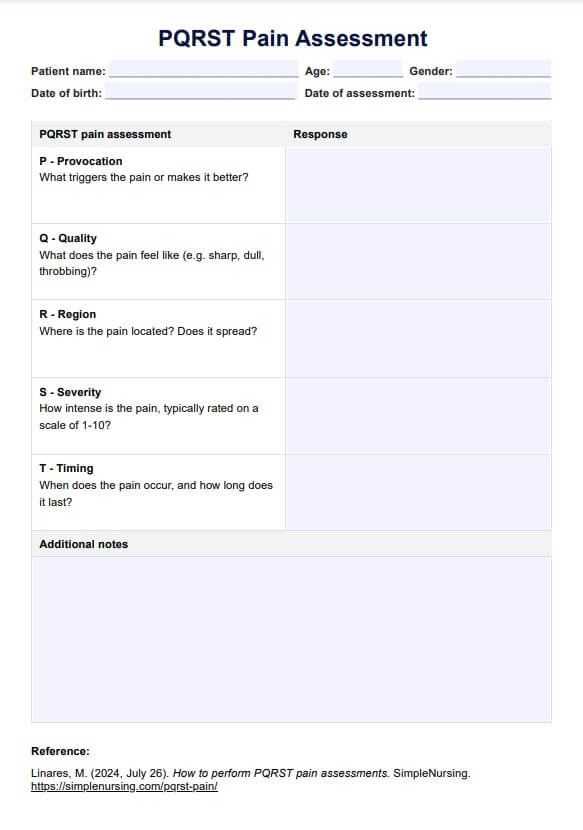The PQRST Pain Assessment is popular among healthcare professionals because it provides a comprehensive and systematic approach to understanding a patient's pain, essential for effective treatment planning. By breaking down the complex experience of pain into manageable components, it enhances communication between patients and providers, allowing for more accurate diagnoses and tailored interventions.

PQRST Pain Assessment
Learn about PQRST Pain Assessment and its five components. Get free access to a PDF version and example.
PQRST Pain Assessment Template
Commonly asked questions
Scoring the PQRST Pain Assessment involves evaluating each of its five components. The Severity scale is typically rated from 1 to 10. Higher scores indicate greater severity or impact of the pain, with 1 representing no pain and 10 being the worst pain imaginable. This quantification helps healthcare providers gauge the intensity and implications of the patient's pain experience. Other scales assess other aspects of the pain experienced by patients.
Each component of the PQRST assessment should be documented in detail. For instance, note the patient's self-reported pain score, descriptions of the pain's characteristics, and any factors that aggravate or alleviate it. Additionally, it's important to record any changes in the pain score after interventions, the patient's satisfaction with their current pain management strategy, and timely reassessments following treatment.
EHR and practice management software
Get started for free
*No credit card required
Free
$0/usd
Unlimited clients
Telehealth
1GB of storage
Client portal text
Automated billing and online payments











